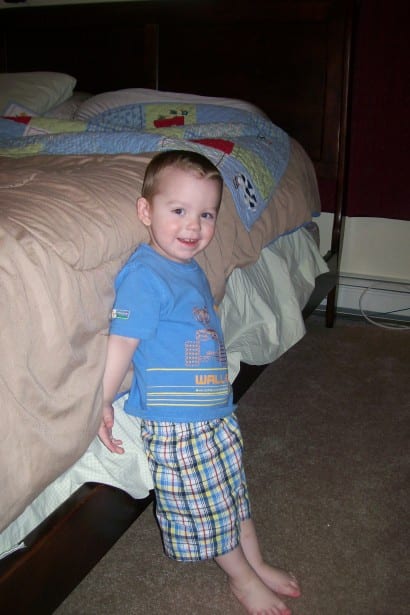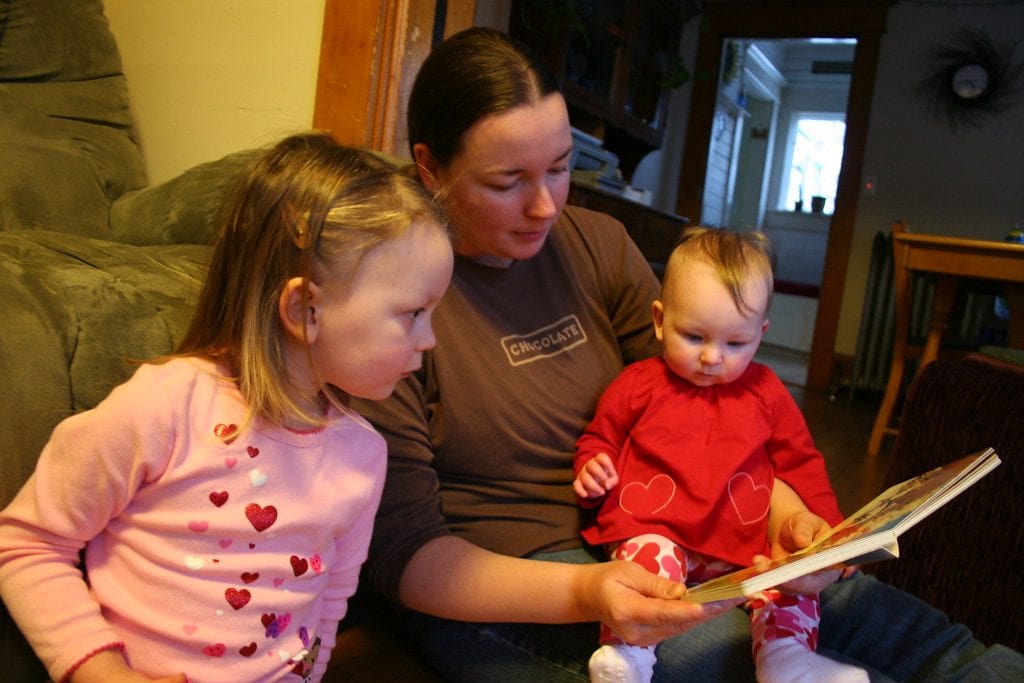During the toddler stage, napping is an art. A toddler needs lots of sleep, with two naps a day and then sleeping at night later on. However, there comes a time when they may need only one nap, and you may need to learn how to transition from two to one. How can you do this in the smoothest way possible? Being able to transition is sometimes hard, but this guide can help you out.

When Does A Baby Transition From Two Naps To One?
If your baby is between 15-18 months, it’s usually a good time to begin the transition. Some toddlers may begin the transition later or earlier, so don’t sweat it if your kid isn’t ready yet, or was ready a long time ago. It’s not something you should rush. Rushing things just leads to angry toddlers and parents, and no one wants that! Instead, look at your baby and this can help you determine when the moment is right. By forcing it, you may end up having it backfire in your face, and that’s never good.

How To Know If They Are Ready
It can be hard to tell if a toddler is ready. The key is to not force it. Forcing it before they are ready can make their sleep schedule a whole lot worse. It’ll just lead to an angry, sleep-deprived toddler and a parent who is begging their toddler to just fall asleep. Like many things in the toddler stage, it’s something that you can’t force. You don’t want to force your kid to change their diet or toilet train without making sure they are ready. However, there are ways that you can figure out whether or not they’re ready. These include.
A Change In Nap Patterns
If you notice that your toddler’s nap patterns are changing, this can be a sign that it’s time for you to change the naptime from two to one. What do we mean by a change in nap patterns? This is how they are performing in their naps. It can differ from toddler to toddler, but when we are talking about this, we generally mean:
The toddler is having a hard time falling asleep with their naps or waking up earlier. This may signal that they only need one nap.
They may nap easily with one nap but struggle with the next. Again, this may be a sign that they may only need one, and that you should transition to one.
They may skip a nap and be fine until it’s bedtime, and then they can rest easier.
This is a repeated pattern. If they have one or two nights like this, it doesn’t necessarily mean that your child is ready to change their nap. There are days where your sleep patterns may change, for example. You may need to make sure that it’s happening for a few weeks.
It doesn’t respond to any tweaks. If you change the timing a little bit, and your child is still struggling with one of their naps, it could be time to transition! Once that happens, here is how you can make the smoothest transition possible.
Finally, if your child can sleep for 11 hours without your care, it can be a sign that it’s ready for you to transition. Make sure you do it as smoothly as possible.
Helping Your Child Transition
If you see the signs, it could mean that your child is ready to transition from one nap to two. However, it’s not the easiest process in the world, and there may be some bumps in the road regardless. Here’s how you can make it easier for both you and the baby.
With nap time, perhaps you should let the child nap whenever they are showing signs of sleepiness. When this happens, you may want to put them to sleep and see where they go from there. Don’t force your baby to stay up for longer than they want.
The power of incremental change is always good. Wanting to change naptime in one feel swoop sounds like a good idea until your child is getting angry about it. Move the morning nap to one single nap in the afternoon. Every day, make the morning nap 15 minutes later until eventually, it reaches the afternoon. This can help you rest easier. In a week, your child may be able to fall asleep much easier. Patience and incremental change are good if you want results.
Keeping your kid active all day can help tire them out and allow them to get a good night’s sleep. If they are lazy all day, they may be energetic.
About 30 minutes before it’s time to sleep, it’s time to wind down. Take your kid away from a device, read them a story, and then let them nap in a cool, darkroom. This can help them sleep much better. Children love to sleep a lot, so make sure that they’re getting it.
When your kid is adjusting to their new single nap, it’s okay for you to adjust the bedtime a little bit. Maybe you can move bedtime back a little bit if you so wish. This can help your child sleep much better. Going to bed too late can mess with their schedule.
There may be bumps in the road. For example, your child may still want to have two naps a day. That’s okay. Not every day is going to be single nap, but as long as you try to stick to a schedule, you can help your kid transition as smoothly as possible. It’s not going to be completely linear.

Conclusion
Transitioning from two to one nap is always exciting. Your toddler is growing into a more independent child who needs less sleep, and this means there is more time for fun. So don’t fear change: embrace it.
When Do Babies Go From 2 Naps to 1 FAQs
When do babies transition to one nap?
A lot of toddlers drop the second nap between 12 and 24 months. However, this transition period is often difficult for them due to uncertain sleep requirements.
Is your baby not taking a nap?
Honestly, babies consistently refuse one nap for several weeks, not just a day or two.
How can I help transition my baby from two naps to one?
Recognize the signs that your baby is ready. The goal with one nap is for the nap to happen about halfway through the day. So you need to provide a wind-down routine so you can adjust bedtime as needed.
Is it too early for a 12 months old baby to get one nap?
If you are wondering when do babies go from 2 naps to 1, you must realize that shifting from two naps in a day back to one can require more parental tolerance.
What age do babies start the 2 to 1 nap transitions?
For most babies, they change from one nap to two between 13 – 18 months.
How long should a baby nap twice daily?
Toddlers continue to nap twice a day until they are 12–18 months of age.
How long is a 1-year old supposed to nap?
If the child is getting the right amount of sleep at night, the naps should add up to a total of two to two-and-a-half hours for toddler 12 months old.
Which nap do babies drop first?
Most parents should understand that when do babies go from 2 naps to 1, there is a wide range of time when they will transition. Some babies are ready to transition to one nap as early as 12 months, while other babies need two naps until 18 months.
Is one nap enough for a 1-year-old?
11–14 hours of sleep a day is what your child needs.
Why are naps so hard for babies?
Babies who do not get enough sleep at night are too tired to nap during the day as well.
Should you let babies nap as long as they want?
When you realize when do babies go from 2 naps to 1, you think about the time they sleep. Do not allow your baby to nap more than 2-3 hours because it can affect the8ir night’s sleep.
Do babies drop naps on their own?
Every child is complex — it’s just as natural to drop the third nap when the baby is five months old.
How do I know when my child is done with naps?
You will know the baby is done with napping when your baby can make it through the day with minimal behavior changes.
Do daytime naps affect night sleep for toddlers?
Yes. There is a big possibility that your child’s night-time sleeping habits may be interrupted by their daytime naps. That is depending on how tired your baby is.
What do you do when your baby won’t nap?
Add quiet playtime in his bedroom to your nap routine, as well as create a flexible schedule for your baby’s sleeping time.
When Do Babies Go From 2 Naps to 1 Other Resources
pediatricsleepcoach.com
happiestbaby.com
nocrysolution.com
Last Updated on August 14, 2025 by Jejomar Contawe
DISCLAIMER (IMPORTANT): This information (including all text, images, audio, or other formats on FamilyHype.com) is not intended to be a substitute for informed professional advice, diagnosis, endorsement or treatment. You should not take any action or avoid taking action without consulting a qualified professional. Always seek the advice of your physician or other qualified health provider with any questions about medical conditions. Do not disregard professional medical advice or delay seeking advice or treatment because of something you have read here a FamilyHype.com.